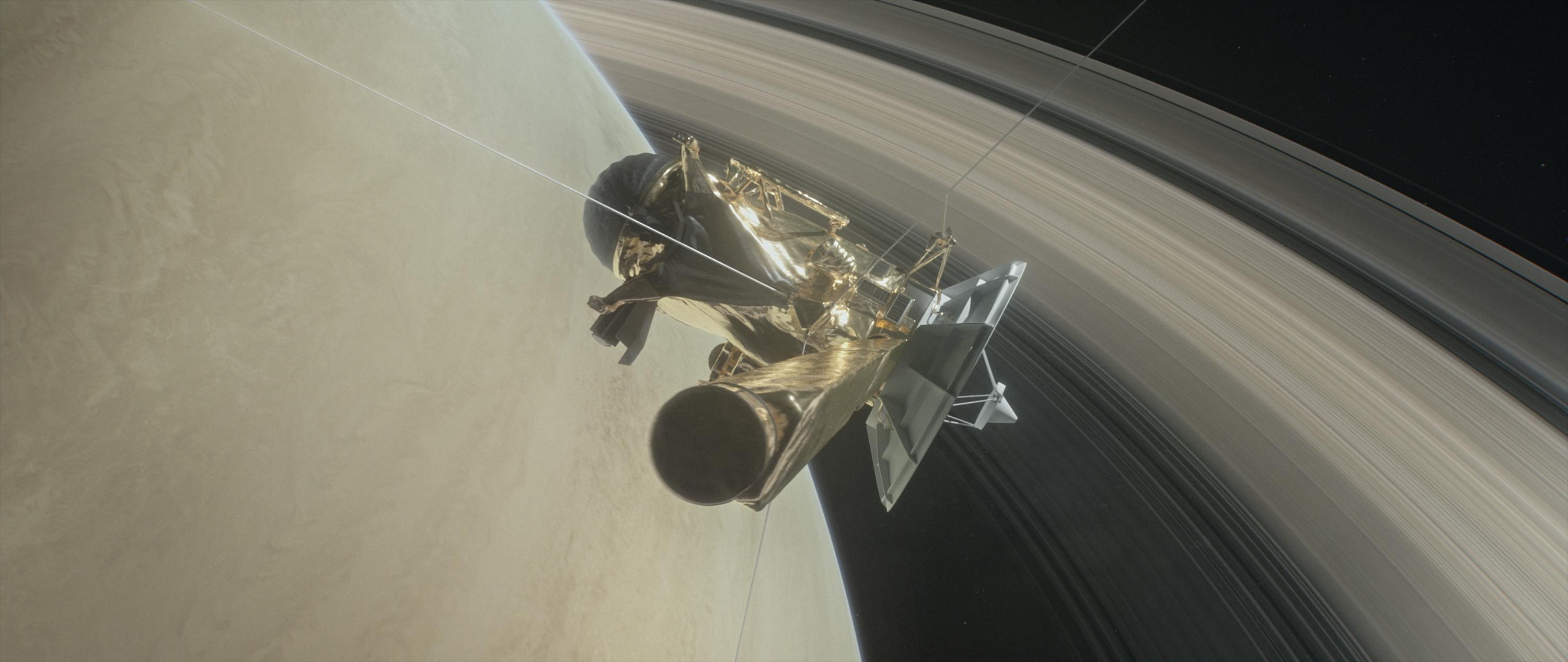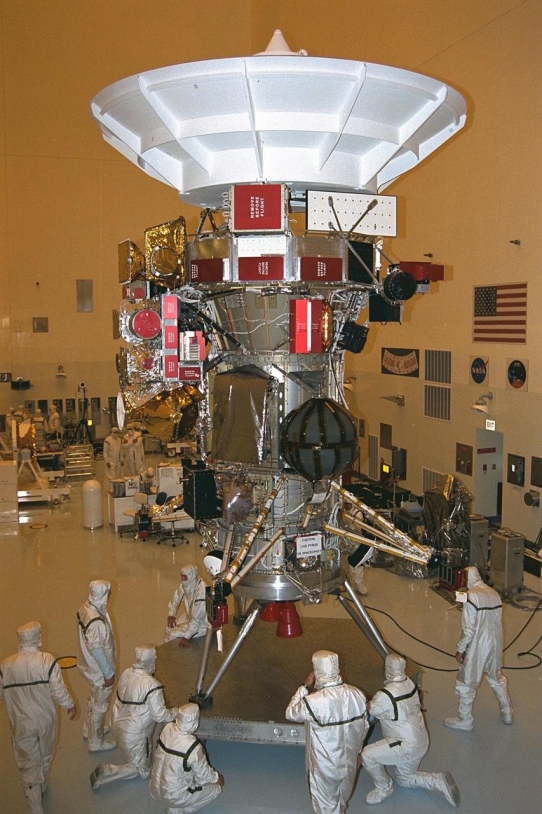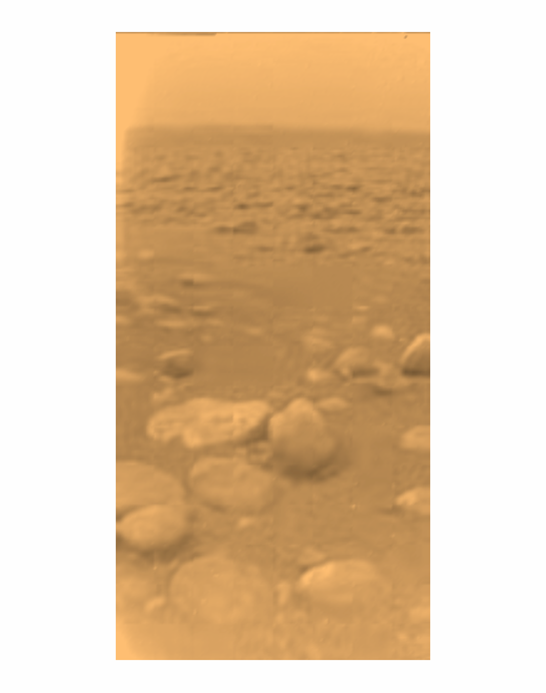Birth of an interplanetary spacecraft
Cassini’s story begins at the start of the 1980s, when the Voyager 1 and Voyager 2 probes flew past Saturn. In 1980 and 1981, they closely approached the planet over a period of 10 days and beamed back the clearest pictures of it ever seen to Earth. At the same moment, the United States had begun development of the Galileo spacecraft designed to probe Jupiter, and an international group of scientists got together to study a similar mission to Saturn.
“The project was initiated by Daniel Gautier, Wing Hip and Tobias Owen, the three founding fathers of the Cassini mission in the United States. Its objectives were to study Saturn, its rings and moons. The idea was to probe the dynamics of the planet’s atmosphere and inner structure, to determine the age and mass of its small moons and to ascertain their surface composition and geological evolution.”
On the European side, a group of scientists submitted a proposal to ESA to contribute a probe called Huygens to the mission. From the outset, the consensus was to focus the mission on one moon in particular: that moon would be Titan, which the Voyager probes studied but they were unable to see the surface through its thick nitrogen and methane atmosphere. The Huygens mission was selected in November 1988.
“Roger-Maurice Bonnet (ESA’s Director of Science at the time) led the collaboration on Cassini-Huygens. In fact, combining Europe’s and the United States’ efforts prevented Cassini from meeting with the same fate as other projects scrapped as a result of President Reagan’s budget cuts. It was because the mission was an international endeavour and due to the political intervention of ESA, along with that of France and other nations, that the project was able to continue.”
The long road to Saturn
The Cassini project thus got the go-ahead from NASA in late 1989 and construction of the spacecraft began at JPL in early 1990. Five interdisciplinary science teams shared the research effort on Saturn, its magnetosphere, Titan, the rings and small moons. Six instruments were developed for Huygens and 12 for Cassini.
“During the mission’s development, budget restrictions affected construction of the pointing platform designed to accommodate the instruments. As a result, the instruments had to be fixed to the body of the spacecraft, which meant it would be impossible to operate them all at the same time. Some heated debate ensued as teams sought to defend the value of their instruments and science data, and that’s one of the reasons why the mission was extended right up to the present day.”
In all, it took seven years to build the two spacecraft and their instruments in readiness for launch in 1997. It took seven more years to reach Saturn, after two flybys of Venus and one of Earth to pick up the gravitational boost and acquire the velocity needed to put the mission on its course towards the outer reaches of the solar system. Cassini eventually entered orbit around the ringed planet on 1 July 2004.
“The mission was initially planned to last four years, with a two-year extension. But in 2010 a much longer extension was decided on the strength of its many discoveries and because most of the instruments were still in good shape. As a result, Cassini is still out there two decades after its launch.”
Huygens hitches a ride
A few months after the mission reached Saturn, the big day arrived: on 14 January 2005, the Huygens probe released by Cassini three weeks earlier was just 1,600 kilometres from Titan. Following a two-and-a-half-hour descent, it touched down on the moon’s surface and sent its pictures back to Cassini, which then relayed them to Earth. But what were the mission’s scientists expecting to see?
“At the time of the Voyager missions in 1980, we knew nothing about Titan’s surface,” Christophe Sotin recalls. “We knew there was methane in its atmosphere, which suggested there must be hydrocarbon oceans. Voyager had also identified molecular nitrogen as the main component of its atmosphere. Titan’s surface was therefore a key target for the mission: Cassini was carrying a radar to peer through its atmosphere, and the Huygens module would perform analysis in situ. While the mission was in development, telescope observations showed that the infrared camera would also be able to view the surface, so the mission was conceived around those observations.”
Science teams knew what to look for, but not what they would find. Huygens was designed chiefly as a descent module rather than a lander. After touching down, its batteries had enough charge to keep it sending back images and data on the composition of the atmosphere and surface for 30 minutes, before they ran out, leaving the Cassini orbiter to pursue its own mission.
grand finalE
Cassini is a space exploration dream that began more than 30 years ago and is now about to end. Over the last few months, it has begun its ‘Grand Finale’, flying between Saturn and its rings where no spacecraft has ever flown before. And on 15 September, it will take its final curtain call with a controlled plunge to obtain its last precious data before breaking up in the ringed planet’s atmosphere.
Science teams are hoping the spacecraft will deliver new insights into the planet’s magnetic field, the composition of its atmosphere and most of all the mass of its rings. Cassini’s discoveries have already changed how we see Saturn, its moons and rings forever, while also telling us more about how the giant planets of our solar system formed.
“There isn’t a single science objective that hasn’t been covered,” concludes Christophe Sotin. “With the geological and geothermal activity detected on Enceladus, and Titan’s molecular nitrogen atmosphere and carbon cycle, the two moons exhibit conditions very similar to those on primeval Earth. That raises new questions about life as we know it, which may have formed around Saturn as Cassini’s discoveries have shown. And to answer those questions, we’ll need to send new missions there.”

More information
Science contacts
- Francis Rocard, Head of CNES’s solar system programme francis.rocard at cnes.fr
- Christophe Sotin, Chief Scientist, Solar System Exploration, Jet Propulsion Laboratory christophe.sotin at jpl.nasa.gov


